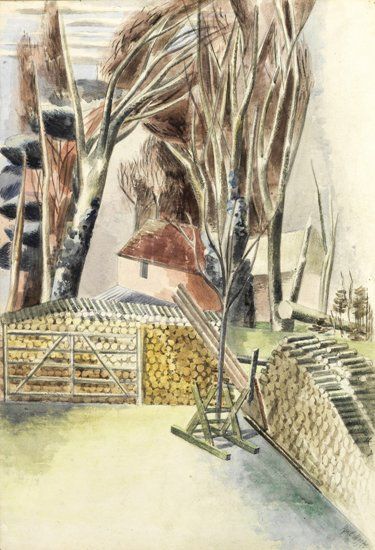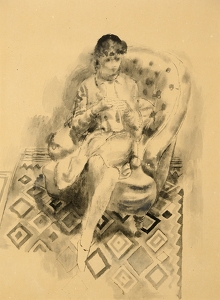

1889-1946
Woodstacks at Iden
Ref: 456
Signed and dated l.r.: Paul Nash/1931
Watercolour over pencil, 66.5 by 46.5 cm
Provenance: Rex Nankivell; Anthony Crossley, 1949. Thence by family descent
Exhibited: London, Agnew’s, March 1931, no.44 ; London, The Redfern Gallery, January 1932, no.73, London, The Redfern Gallery, January 1949, no.17
Literature: Apollo Magazine, April 1931; Andrew Causey, Paul Nash, Clarendon Press, Oxford, 1980, p.417, no.715; Margot Eates, Paul Nash 1889-1946, John Murray, 1972, illustrated
Dating from the Nashes move to their farmhouse near Rye, Woodstacks at Iden must be counted as one of the artist?s most important watercolours from the early 1930s. Rich in suggestion and symbolism, the work points to a decade when Nash began to assimilate the influences of abstraction and surrealism. The watercolour bears particularly close similarities with one of Nash?s most celebrated paintings, Landscape at Iden of 1929, now in the Tate Gallery. That work too focuses on the piles of woodstacks (this time from, Oxenbridge Cottage, his previous house nearby) as well as the deliberately sometimes uncomfortable placing of objects within the work?s composition. Such works help support Nash?s position as the most important and influential British landscape painter of the inter-war years. Works like Woodstacks at Iden also mark key points in the artist?s development that in turn were to lead to some his most experimental mid 1930s works such as Equivalents for the Megaliths of 1935(also in the Tate, inv.1251).
 SOLD
SOLD



